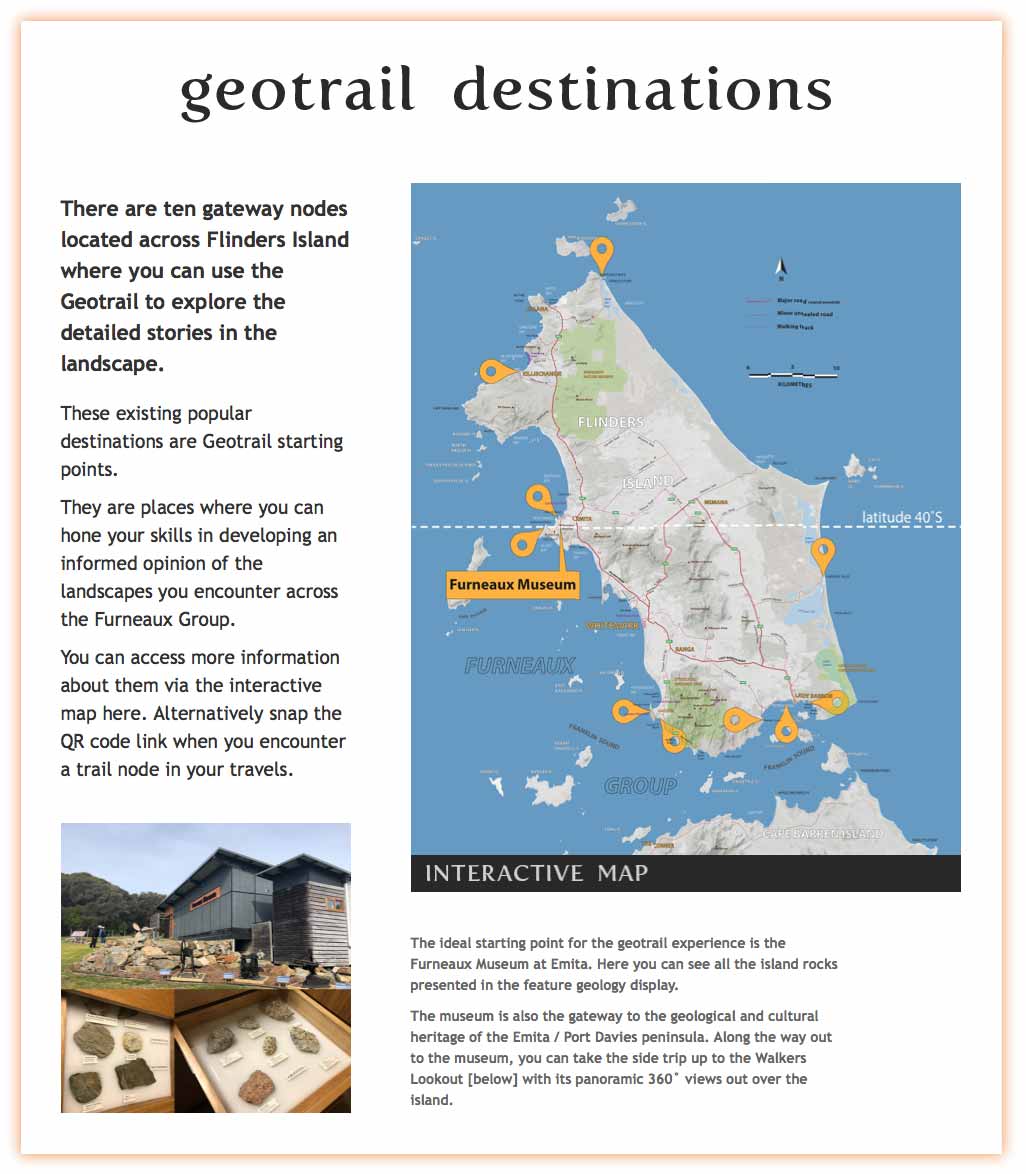The Furneaux Geotrail webapp produced in 2018 for Flinders Island in Tasmania, uses an interactive map to provide easy access to the specific location details.



Without a clear sense of where the asset is located relative to your current and/or intended position in the landscape, it is very difficult to meaningfully assimilate the information being provided.
This is why interactive maps are such a potent means of effective information delivery. By accessing the information "through" the map you can't help but be aware of where it is.
While many websites make use of the Google API to include some basic mapping content, without careful customisation of this resource its overall contribution to the planning process can be limited.
The optimal outcome for mapping comes from investing in the production of bespoke customised maps that directly address the context of the resource being discussed.
For this reason making integrated use of an "explore" subdomain webapp as part of the overall planning utility of the main domain website can be valuable.
The Furneaux Geotrail webapp produced in 2018 for Flinders Island in Tasmania, uses an interactive map to provide easy access to the specific location details.

Alongside the use of subdomain support, the main delivery of planning content can also utilise site aggregation principles.
This involves linking to selected third party web pages rather than attempting to reproduce all relevant planning material within the body of the main website.
An obvious example of this comes in the case of public transport options for accessing a venue.
Including meaningful content in relation to this on the core website can involve a significant ongoing commitment to updating timetable and advisory information.
By putting users directly in touch with the agency that "owns" this information, site aggregation principles can signficantly advance the utility of the service provided.
This content can either by included within a page by an iframe (just as Facebook feeds are displayed on some pages) or else by providing a link to the relevant page.
Careful use of the target "top" tag to ensure that the back button will return to the viewer to their original viewing page within the host website is an important adjunct to this site aggregation approach.
